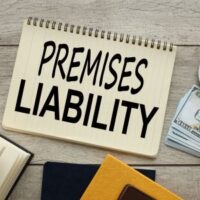Understanding Slip-and-Fall Injuries as a Tort

by Michael Cohan, Managing Partner, Cohan Law
Introduction
A slip-and-fall injury, is a common forms of tort recognized under premises liability law.
A tort is a civil wrong that causes harm or loss, giving rise to legal liability.
Under tort law, a property owner or occupant has a duty of care to maintain a reasonably safe premises for others.
When a person slips, trips, or falls on another’s property due to an unsafe or defective condition, the event may give rise to a premises liability tort — a subset of personal injury law.
The underlying tort principle is that those who control property owe visitors a duty to exercise reasonable care in preventing foreseeable harm.
For instance, if a grocery store fails to clean a spill in an aisle, and a customer falls, the resulting harm may be treated as a negligence tort under premises liability.
The injury did not arise from intentional conduct but from a failure to act with reasonable care — a classic example of tortious negligence.
Torts and the Basis of Legal Responsibility
Tort law serves as the foundation for most personal injury claims. It imposes liability when one party’s conduct or negligence causes harm to another.
Slip-and-fall incidents fall within this framework because they involve a negligent property owner or occupant, who fails to maintain a reasonably safe premises, which causes injury to another party.
In Slip and Fall tort claims, the main issue is whether the property owner or occupier breached a duty of care owed to lawful visitors.
For a slip-and-fall tort claim, a Plaintiff must establish four elements:
- Duty – The defendant owed a duty to maintain the property in a safe condition.
- Breach – The defendant breached that duty through action or inaction.
- Causation – The breach directly caused the injury.
- Damages – The plaintiff suffered an actual loss or injury.
These are the fundamental elements of nearly all negligence torts, including those arising from dangerous premises.
The key inquiry is whether the property owner knew or should have known of the condition and whether reasonable measures were taken to prevent harm.
When the owner’s failure to act results in injury, tort law provides the injured party with a civil remedy.
Public Policy Behind the Tort System
The purpose of the tort system is not only to compensate injured persons but also to promote safer conduct and deter negligence.
By holding property owners accountable for hazardous conditions, premises liability torts encourage regular maintenance, safety inspections, and timely warnings to the public.
Conclusion
A slip-and-fall injury is more than a simple accident; it represents a recognized tort within the field of premises liability.
The law of torts provides a civil avenue for redress when a person’s injury stems from another’s failure to maintain safe property conditions.
By understanding the tort principles of duty, breach, causation, and damages, both property owners and visitors can better appreciate their rights and responsibilities under modern negligence law.
References
- Page, Joseph A. The Law of Premises Liability: Tort Liability of the Owner or Occupier of Real Property for Harm Inflicted Upon Persons While on the Premises and for Harm Inflicted by Persons Who Become Intoxicated While on the Premises. Anderson Publishing Co., 1988.
- Nolo Legal Encyclopedia, “Slip and Fall Claims and Premises Liability”.
